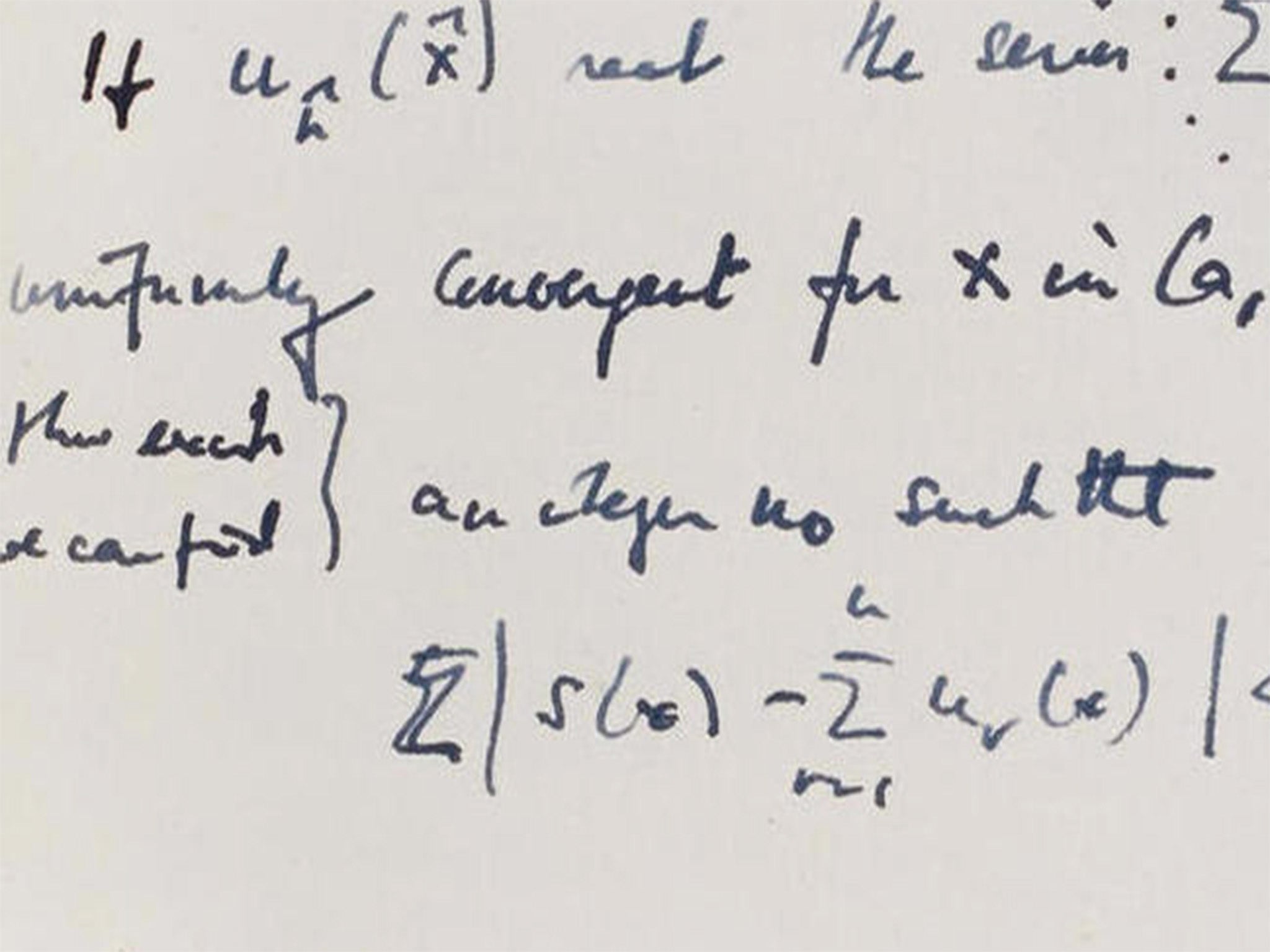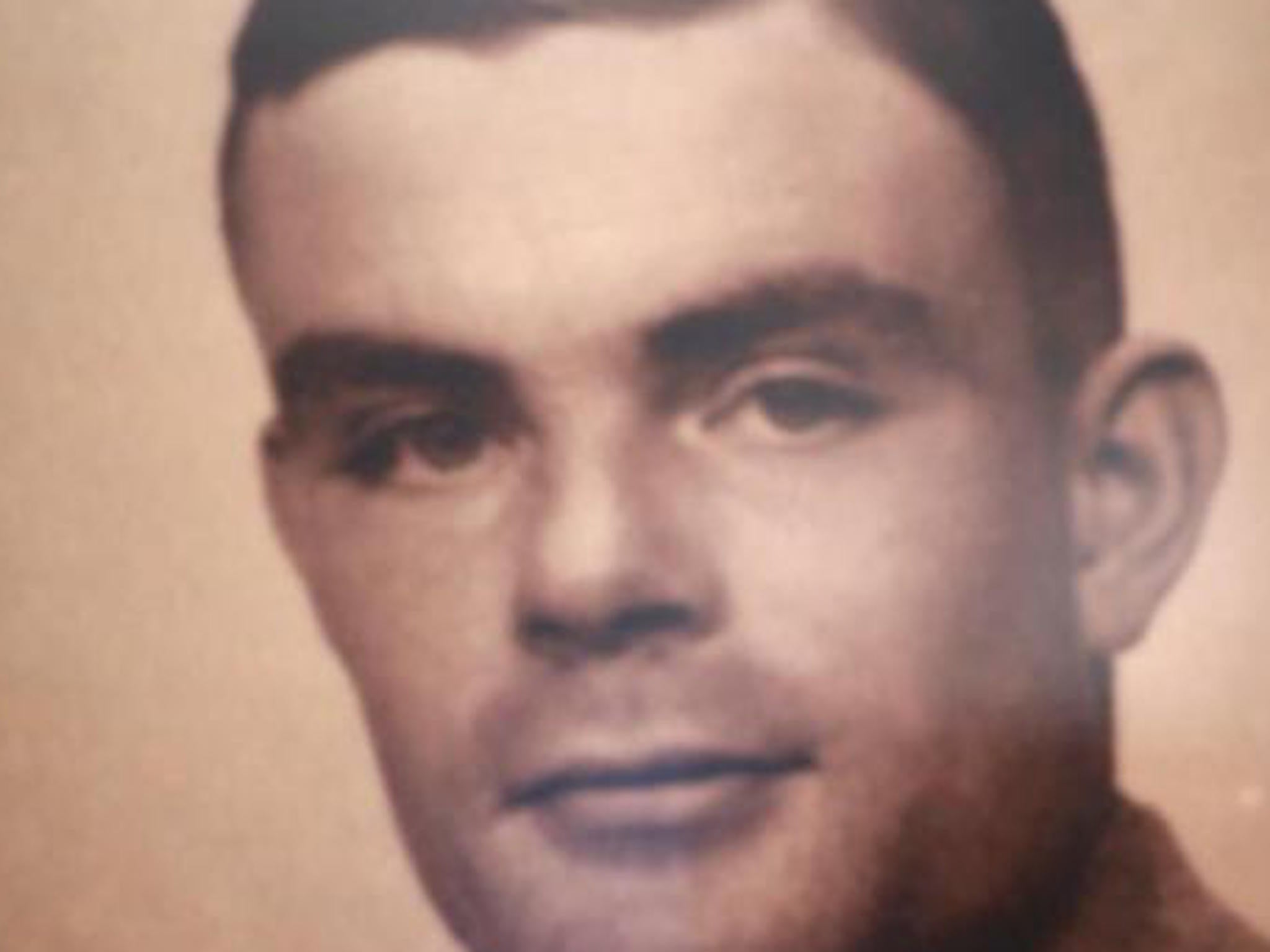Alan Turing: Handwritten journal of Enigma code-breaker sells for more than $1m
Diary had never been made public before

Your support helps us to tell the story
From reproductive rights to climate change to Big Tech, The Independent is on the ground when the story is developing. Whether it's investigating the financials of Elon Musk's pro-Trump PAC or producing our latest documentary, 'The A Word', which shines a light on the American women fighting for reproductive rights, we know how important it is to parse out the facts from the messaging.
At such a critical moment in US history, we need reporters on the ground. Your donation allows us to keep sending journalists to speak to both sides of the story.
The Independent is trusted by Americans across the entire political spectrum. And unlike many other quality news outlets, we choose not to lock Americans out of our reporting and analysis with paywalls. We believe quality journalism should be available to everyone, paid for by those who can afford it.
Your support makes all the difference.A handwritten notebook that belonged to the celebrated World War II code-breaker Alan Turing has sold in the US for more more than $1m
The 56-page journal, written in a simple notebook bought from a stationers in Cambridge, was sold at an auction on Monday for $1,025,000. The identity of both the seller and buyer have not been released.
The journal, which has never before been seen in public, dates from 1942-44 and covers the period when Turing was working at Britain’s Bletchley Park to break the German Enigma Code.

The auction house Bonhams said the journal provided a remarkable insight into the thought processes of the mathematician and computer science pioneer. It was among papers left by Turing to his close friend and fellow mathematician Robin Gandy, who wrote a dream journal in the blank centre pages.
The effort of Turing and a team of cryptanalysts to break the code inspired the 2014 film The Imitation Game, starring Benedict Cumberbatch in the role of Turing.
Cassandra Hatton, a spoeswoman for Bonhams, told The Independent, she did not believe the film had increased the value of the document, even though it had shared Turing's story with the broader public.
"The buyer already knew about Alan Turing," she said.
The Associated Press said that in one part of the journal, Turing turns his attention to a complex calculus notation.
“The Leibniz notation I find extremely difficult to understand in spite of it having been the one I understood the best once,” he wrote.
“It certainly implies that some relation between x and y has been laid down eg, y(equals)x2+3x.”
In addition to the notebook, Bonhams was also offering for sale a working German Enigma enciphering machine. The three-rotor device was manufactured for the German military in July 1944 and sold for $240,000.
Turing was prosecuted for being gay at a time when it was illegal in Britain. He was convicted of indecency in 1952 and agreed to undergo hormone treatment as an alternative to imprisonment to “cure” his homosexuality.
He died in 1954 of cyanide poisoning. It was ruled a suicide although his family and friends believed it might have been accidental.
Gandy gave the papers to King’s College in Cambridge in 1977. But he kept the notebook, using its blank pages for writing down his dreams at the request of his psychiatrist. Bonham said Gandy’s entries were highly personal. The notebook remained in his possession until he died in 1995.
In the journal, Gandy writes: “It seems a suitable disguise to write in between these notes of Alan’s on notation, but possibly a little sinister; a dead father figure, some of whose thoughts I most completely inherited.”
Join our commenting forum
Join thought-provoking conversations, follow other Independent readers and see their replies
Comments